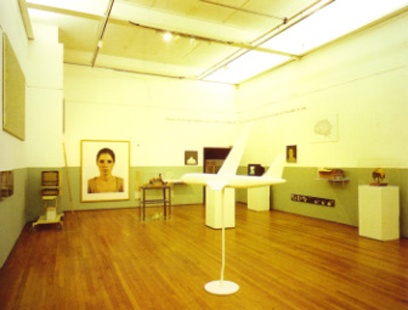The Artist-Curator: Curators as Artists and Artists as Curators
11 Dec 2007
The postwar era fundamentally altered the way in which the public interacted with art. One of the most visible changes was the emergence of the artist from studio to exhibition space. Key exhibitions of the late 50s, such as This is Tomorrow (Whitechapel, 1956) and Parallel of Life and Art (ICA, 1953) saw artists and architects collaborating on exhibition stands and curatorial models.
Arguably the most ambitious artist-curator was Richard Hamilton, whose amalgamation of images, artworks and display techniques created a new standard in curatorial practice (An Exhibit, ICA, 1957). This fluid positioning has resulted in some of the most interesting exhibitions in the contemporary British art scene and recently, due to pressures both creative and economic, the rise in the artist-run space.
Many questions remain unanswered: is there a fundamental difference of position between artist and curator? Do we need curators at all? Should the curator be considered an artist?
Speakers on this panel include Mark Sladen, Director of Exhibitions at ICA, Jeremy Millar, artist and AHRC Research Fellow in the Creative and Performing Arts at the Ruskin School of Drawing and Fine Art, University of Oxford, and curator of The Institute of Cultural Anxiety - Works from the Collection at the ICA in 1994, Gavin Wade, Director of Eastside Projects, Birmingham, Siobhan Wootton, co-director and curator of Alma Enterprises, an artist/curator run space on Vyner Street, London, and Dr. Cameron Cartiere, Director of Doctoral Research for the Faculty of Lifelong Learning at Birkbeck College, and MA course director for the department of Arts Policy & Management.
Developed in association with Ben Cranfield and the London Consortium. Ben Cranfield is a collaborative doctoral award student at the ICA and London Consortium, currently working on an intellectual history of the arts in postwar Britain.
In association with the London Consortium and London Centre for Arts and Cultural Enterprise



